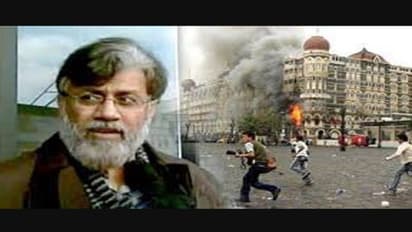Tahawwur Rana extradition today: Delhi, Mumbai jails being readied for 26/11 mastermind

Synopsis
Tahawwur Rana, accused of masterminding the 2008 Mumbai terror attacks, has been extradited from the United States and is expected to arrive in India today.
26/11 plotter Tahawwur Rana is finally being brought to India on Wednesday. Authorities have activated high-security protocols in two jails, one in Delhi and another in Mumbai, adhering to classified recommendations issued by the US judiciary for handling extradited convicts. Rana is expected to initially remain in the custody of the National Investigation Agency (NIA) for intensive interrogation. The entire covert operation is being overseen by National Security Adviser Ajit Doval, in coordination with senior officials from the Ministry of Home Affairs.
Rana, a Pakistani-Canadian national and a known Lashkar-e-Taiba (LeT) operative, played a key role in the 26/11 Mumbai carnage. Investigators say he orchestrated travel documents for his close associate, Pakistani-American David Coleman Headley (aka Dawood Gilani), enabling him to enter India under the guise of a businessman. Headley surveilled targets for the Lashkar-e-Taiba, which executed the blood-soaked three-day siege of Mumbai in 2008, in collaboration with Pakistan’s shadowy intelligence agency, the ISI.
Rana later boasted about the massacre that left 166 dead, claiming the attackers deserved “Pakistan’s highest posthumous military honours.”
To date, Ajmal Kasab remains the only Lashkar terrorist apprehended alive and brought to justice in India for the 26/11 atrocity.
Donald Trump announced Rana’s extradition
Earlier this year, US President Donald Trump had announced Rana’s impending extradition, declaring, "He’s going back to India to face justice." That December, India had formally requested Rana’s extradition via diplomatic channels. A formal complaint followed in June 2020 to initiate his provisional arrest.
Rana was a close aide of ISI handler Major Iqbal—the alleged mastermind behind the attacks. Together with Headley, Rana laid the foundation for the deadly operation, as confirmed in court filings submitted by both Indian and US authorities.
According to investigators, Rana himself had visited Mumbai just days before the massacre. “He had checked into hotel Renaissance in Powai during his visit to India between Nov 11 and Nov 21 in 2008. The attacks occurred five days after he departed,” states a Mumbai police dossier.
A justice department brief reveals that Rana and Headley were arrested in 2009 by the FBI while plotting an attack on a Danish newspaper, and for providing material support to Lashkar between 2005 and 2009.
During his testimony in a US courtroom, Headley described how, in the summer of 2006, he and two Lashkar operatives discussed launching a sham immigration office in Mumbai to serve as a front for reconnaissance operations. Headley then briefed Rana—his longtime friend since their school days in Pakistan—about his mission to identify high-profile targets across India.
Their criminal collaboration was so tightly knit that by late 2009, the two agreed to divert funds from Rana to support Headley’s separate jihadist assignment in Denmark. The evidence includes an email to the Danish newspaper, which Rana had drafted while impersonating Headley.
For the 26/11 plot, Headley had sought explicit approval from Rana to establish a branch of First World Immigration Services—Rana’s firm based in Chicago—as a front in Mumbai. With Rana’s assistance in obtaining a five-year visa, Headley made five reconnaissance trips to India between 2007 and 2008, gathering critical intel for the terror strike.
“Rana directed an individual associated with First World to prepare documents supporting Headley's cover story, and advised Headley how to obtain a visa for travel to India,” states the justice department document. Mumbai Police also unearthed incriminating emails between Rana and Headley discussing ISI’s Major Iqbal.
Stay updated with the Breaking News Today and Latest News from across India and around the world. Get real-time updates, in-depth analysis, and comprehensive coverage of India News, World News, Indian Defence News, Kerala News, and Karnataka News. From politics to current affairs, follow every major story as it unfolds. Get real-time updates from IMD on major cities weather forecasts, including Rain alerts, Cyclone warnings, and temperature trends. Download the Asianet News Official App from the Android Play Store and iPhone App Store for accurate and timely news updates anytime, anywhere.